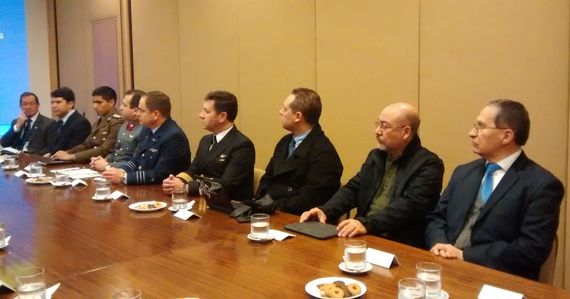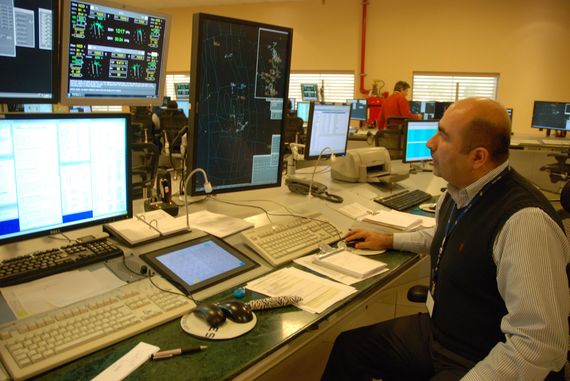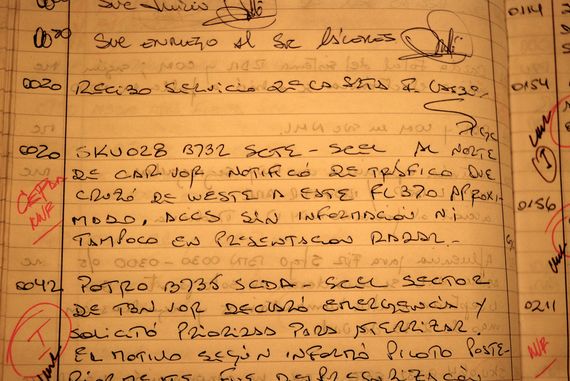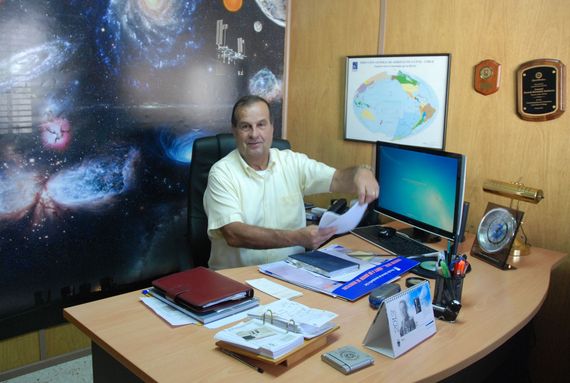Author, New York Times bestseller, 'UFOs: Generals,
Pilots and Government Officials Go On the Record'
Posted: 08/12/2014 2:58 am EDT Updated: 08/12/2014
7:59 am EDT
A recent high level meeting at the headquarters of
Chile's Civil Aviation Department will likely be the envy of those Americans
desiring open government participation in UFO investigations, rather than the
familiar blanket dismissal.
The question of whether UAP (unidentified aerial
phenomena) pose any danger to civilian and military air operations was up for
discussion. An official
video about the
event (the first 4 minutes), posted on Friday, is telling. You don't need to
understand a word of Spanish to take note of the serious expressions
on the faces of the participants.
Chile's agency investigating UFOs/UAP, known as the CEFAA (Committee for the Studies of Anomalous Aerial
Phenomena) is located within the Ministerial Department of Civil Aeronautics
(DGAC), the equivalent of our FAA, under the jurisdiction of the Chilean air
force.
Gen. Ricardo Bermúdez, director of the CEFAA, invited
nineteen highly qualified experts from a range of specialties to the July 31st
meeting, to explore the safety question and attempt to achieve a conclusion.
The resulting dialogue lasted three hours.
The new DGAC director, air force Gen. Rolando
Mercado, former director of operations and strategic planning of the Joint
Chiefs, welcomed the participants and attended the early part of the
discussion. "I wish to thank all the members of this committee for their
serious, scientific approach in the investigation of this phenomenon," he
said afterward, "which has rightly earned prestige for the CEFAA, not only
in Chile, but also in foreign countries."
Scientists in attendance included two well known
astronomers (each with an asteroid named after him), a nuclear chemist from the
Nuclear Energy Commission, a doctor of aerospace medicine who is also a UN
representative, a physicist, an army psychologist and an air force
psychologist.
Among the DGAC specialists were the director of the
Meteorological Observatory, the chief of Radar Operations Metropolitan Center,
the head of Accident Investigations, DGAC chief of operations, the director of
Airport Security Operations, and an aerospace engineer.
Representatives from different branches of the armed
forces and the police corps were also present. All of them, including a navy
commander who is in charge of flight security for navy aviation, are also pilots,
or have been in the past. Along with Mercado, Bermúdez was once a combat pilot.
The panel members were familiar with the subject
matter due to their various affiliations with the CEFAA as advisors, committee
members, and experts called upon to assist with case investigations.


photos courtesy DGAC
Each participant had already accepted the fact that
UFOs are a real phenomenon which needs to investigated, without question. This,
alone, is unusual, as we Americans see it.
"For Chileans, this is completely normal and we
don't consider it news at all," says Jose Lay, international affairs
director for the CEFAA.
Here are excerpts from some of the more interesting
comments which helped influence the final conclusion:
- DGAC
chief of operations: "If, as many witnesses have declared, the UAP
demonstrates 'intelligent behavior,' and if we admit this fact, then we
must look for 'the intention behind' that intelligence, whatever it may be
-- a form of energy, perhaps -- it doesn't matter. Intelligence is what
matters. If this is so, we must ask: has it shown hostility or carried out
openly threatening maneuvers? Has it actually attacked our aircraft? To
date, this doesn't seem to be the case. We cannot possibly call something
a threat to something or someone if they have not shown any open intention
to do harm. And even less, we do not even know their exact nature!"
- Navy
captain Roberto Borè, Naval Aviation: "Aside from any natural
distractions to the flight crews, the risks so far have been null. We
cannot call UAP a risk to our operations, not even a low risk. An
interaction, either good or bad, between a human being and UAP so far is
nonexistent in our skies [in Chile], as far as I know."
- Radar
control chief Mauricio Blanco: "In aeronautics, we have to measure
risk scientifically and we have all the tools for that. We have to
establish a 'risk matrix,' considering possibility and probability. The
risk level [for UAP] has not been analyzed. It can be measured, and given
the probabilities, this level is very low."
Blanco is one of the highest officials actually on the
front lines when UFO sightings are reported to ground control radar or picked
up by radar, anywhere in the country. In 2012, I interviewed him at the radar
center in Santiago, and he showed me the log book where UFO sightings are
initially recorded before being sent to the CEFAA. Reports are written by hand
to assure they are not tampered with or affected by computer transfer, and to
provide a clear record of who actually wrote the entry. As an American, I was
astonished by Blanco's matter-of-fact attitude about UFOs. It's hard to get
used to the fact that UFOs are fully accepted as part of life in Chile.

Chief of Radar Operations Mauricio Blanco at work (photo © Leslie Kean)

A handwritten notebook at the radar center with an
entry to be turned over to the CEFFA. The notation is in red in the left
margin. (photo © Leslie Kean)
More comments from the meeting:
- "DGAC
expert on accident investigations: "Until now, in practice, we have
seen only the effects. And those we have captured through photographs,
videos, official reports, testimonies, etc. And thus, we are able to say
the phenomenon exists. But its origin, we have not defined. And without
this definition, we cannot establish a strategy to counteract it. ... I
have spoken with pilots who have had sightings. So far, none has experienced
undue concern, just plain curiosity."
- The
nuclear chemist: "If our civilian and military pilots are well
informed about UAP, the risk due to distraction will come down to a
minimum because the surprise factor will not be there. Judging by global
statistics, the number of aircraft that have allegedly been involved in an
accident with UAP would represent a tiny fraction of the accidents caused
by birds."
The air force psychologist advised more education for
pilots -- in order to raise awareness rather than alert them to any latent
danger. Others recommended that instructions on pilot reporting be included
within aviation training courses. The scientists suggested further
multi-disciplined studies "to bring us as close to the real nature [of
UAP] as possible," stated by astronomer Luis Barrera.
The conclusion was clear. "Based on the
evaluation at the meeting, the committee concluded that UAP do not present a
threat or a danger to air operations, either civilian or military,"
Bermúdez said. "Although there have been a small number of accidents
attributed to UAP around the world, none have withstood an objective
examination that presented unmistakable proof that UAP were the cause."

Gen. Bermúdez in his office at CEFAA headquarters in Santiago (photo © Leslie Kean)
The CEFAA staff have their eyes opened for any effects
on air operations that might arise. But this is not the reason they do the
work. They want to learn the nature and origin of the phenomenon simply because
it is a reality that science has not yet explained. "Around 85 percent of
our public believe in the phenomenon, so we have an obligation to investigate
and find out what it is," says Lay. "This should be reason enough for
governments to try and determine the origin. There is no need to fear panic
from the public."
The CEFAA works with its many counterparts in South
America, and has relationships with about a dozen other countries around the
world. Planning is underway for Bermúdez to meet with officials from the French
UFO agency, at the Paris headquarters of the National Space Studies Center
(CNES), the equivalent to our NASA. A formal meeting between representatives of
the CEFAA and the French GEIPAN, the two leading UAP agencies in the world, has
never occurred, and this marks an historic step toward unifying the effort
internationally.
Momentum is building for more governments to address
the UFO problem, and many eyes are on the United States. Through the smallest
change in position, our government has the potential to play a crucial role in
lifting the stigma against research, thereby paving the way to a possible
resolution to the problem.
The Chilean meeting serves as an example of one
country's success in working with the UFO issue at high levels and its ability
to integrate a serious approach throughout the country.

No comments:
Post a Comment